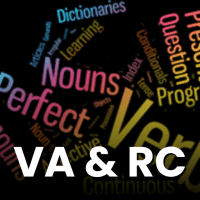Verbal Exam > Verbal Questions > Which types of punctuation are generally used...
Start Learning for Free
Which types of punctuation are generally used to separate independent clauses in declarative sentences in academic writing?
- a)commas and quotation marks
- b)periods and semi-colons
- c)commas and periods
- d)colons and quotation marks
Correct answer is option 'B'. Can you explain this answer?
Verified Answer
Which types of punctuation are generally used to separate independent ...
In the United States, the rule of thumb is that commas and periods always go inside the quotation marks, and colons and semicolons (dashes as well) go outside: “There was a storm last night,” Paul said.
So, periods and semi colons are used to separate independent clauses in declarative sentences in academic writing.
So, periods and semi colons are used to separate independent clauses in declarative sentences in academic writing.
Most Upvoted Answer
Which types of punctuation are generally used to separate independent ...
Independent Clauses in Declarative Sentences in Academic Writing
Independent clauses in declarative sentences in academic writing are typically separated by periods and semi-colons. This punctuation helps to clearly delineate the different ideas being presented in the text and maintain coherence and readability.
Periods
- Periods are commonly used to separate independent clauses that can stand alone as complete sentences. Each independent clause ends with a period, indicating a full stop and a new idea or thought.
Semi-colons
- Semi-colons are used to connect closely related independent clauses in a single sentence. They indicate a stronger separation than a comma but a weaker division than a period. In academic writing, semi-colons are often used to show a close relationship between two independent clauses.
Using periods and semi-colons to separate independent clauses in academic writing helps to improve the clarity of the text and guide the reader through complex ideas. By adhering to proper punctuation rules, writers can ensure that their writing is coherent, structured, and easy to follow.
Independent clauses in declarative sentences in academic writing are typically separated by periods and semi-colons. This punctuation helps to clearly delineate the different ideas being presented in the text and maintain coherence and readability.
Periods
- Periods are commonly used to separate independent clauses that can stand alone as complete sentences. Each independent clause ends with a period, indicating a full stop and a new idea or thought.
Semi-colons
- Semi-colons are used to connect closely related independent clauses in a single sentence. They indicate a stronger separation than a comma but a weaker division than a period. In academic writing, semi-colons are often used to show a close relationship between two independent clauses.
Using periods and semi-colons to separate independent clauses in academic writing helps to improve the clarity of the text and guide the reader through complex ideas. By adhering to proper punctuation rules, writers can ensure that their writing is coherent, structured, and easy to follow.

|
Explore Courses for Verbal exam
|

|
Question Description
Which types of punctuation are generally used to separate independent clauses in declarative sentences in academic writing?a)commas and quotation marksb)periods and semi-colonsc)commas and periodsd)colons and quotation marksCorrect answer is option 'B'. Can you explain this answer? for Verbal 2025 is part of Verbal preparation. The Question and answers have been prepared according to the Verbal exam syllabus. Information about Which types of punctuation are generally used to separate independent clauses in declarative sentences in academic writing?a)commas and quotation marksb)periods and semi-colonsc)commas and periodsd)colons and quotation marksCorrect answer is option 'B'. Can you explain this answer? covers all topics & solutions for Verbal 2025 Exam. Find important definitions, questions, meanings, examples, exercises and tests below for Which types of punctuation are generally used to separate independent clauses in declarative sentences in academic writing?a)commas and quotation marksb)periods and semi-colonsc)commas and periodsd)colons and quotation marksCorrect answer is option 'B'. Can you explain this answer?.
Which types of punctuation are generally used to separate independent clauses in declarative sentences in academic writing?a)commas and quotation marksb)periods and semi-colonsc)commas and periodsd)colons and quotation marksCorrect answer is option 'B'. Can you explain this answer? for Verbal 2025 is part of Verbal preparation. The Question and answers have been prepared according to the Verbal exam syllabus. Information about Which types of punctuation are generally used to separate independent clauses in declarative sentences in academic writing?a)commas and quotation marksb)periods and semi-colonsc)commas and periodsd)colons and quotation marksCorrect answer is option 'B'. Can you explain this answer? covers all topics & solutions for Verbal 2025 Exam. Find important definitions, questions, meanings, examples, exercises and tests below for Which types of punctuation are generally used to separate independent clauses in declarative sentences in academic writing?a)commas and quotation marksb)periods and semi-colonsc)commas and periodsd)colons and quotation marksCorrect answer is option 'B'. Can you explain this answer?.
Solutions for Which types of punctuation are generally used to separate independent clauses in declarative sentences in academic writing?a)commas and quotation marksb)periods and semi-colonsc)commas and periodsd)colons and quotation marksCorrect answer is option 'B'. Can you explain this answer? in English & in Hindi are available as part of our courses for Verbal.
Download more important topics, notes, lectures and mock test series for Verbal Exam by signing up for free.
Here you can find the meaning of Which types of punctuation are generally used to separate independent clauses in declarative sentences in academic writing?a)commas and quotation marksb)periods and semi-colonsc)commas and periodsd)colons and quotation marksCorrect answer is option 'B'. Can you explain this answer? defined & explained in the simplest way possible. Besides giving the explanation of
Which types of punctuation are generally used to separate independent clauses in declarative sentences in academic writing?a)commas and quotation marksb)periods and semi-colonsc)commas and periodsd)colons and quotation marksCorrect answer is option 'B'. Can you explain this answer?, a detailed solution for Which types of punctuation are generally used to separate independent clauses in declarative sentences in academic writing?a)commas and quotation marksb)periods and semi-colonsc)commas and periodsd)colons and quotation marksCorrect answer is option 'B'. Can you explain this answer? has been provided alongside types of Which types of punctuation are generally used to separate independent clauses in declarative sentences in academic writing?a)commas and quotation marksb)periods and semi-colonsc)commas and periodsd)colons and quotation marksCorrect answer is option 'B'. Can you explain this answer? theory, EduRev gives you an
ample number of questions to practice Which types of punctuation are generally used to separate independent clauses in declarative sentences in academic writing?a)commas and quotation marksb)periods and semi-colonsc)commas and periodsd)colons and quotation marksCorrect answer is option 'B'. Can you explain this answer? tests, examples and also practice Verbal tests.

|
Explore Courses for Verbal exam
|

|
Signup for Free!
Signup to see your scores go up within 7 days! Learn & Practice with 1000+ FREE Notes, Videos & Tests.


















